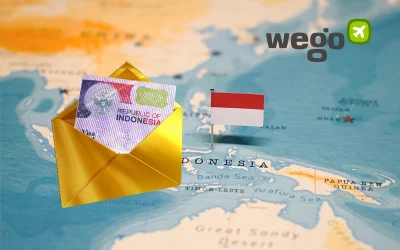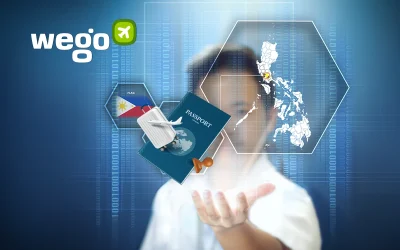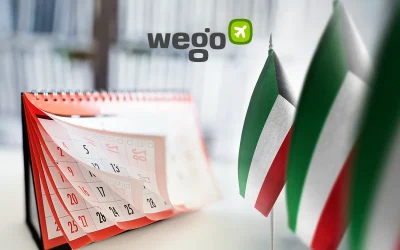This page was last updated on 16 December, 2021.

At a Glance
Travel Restrictions
Entry For Vaccinated Travelers: Allowed
Vaccination Requirements: Travelers can visit Ecuador as long as they show proof of vaccination at the airport before departure.
You do not need to provide PCR test.
Visitors will be asked about and screened for symptoms (such as fever, cough, general malaise, loss of smell, loss of taste) upon arrival in Ecuador and will be evaluated by health ministry personnel. If there’s cause for concern, travelers will be required to take a rapid antigen test and, if it comes back positive, isolate for 10 days at their own expense. If the rapid antigen test is negative, the visitor can continue on their trip and will not need to isolate.
Travelers in Ecuador must abide by safety protocols including mandatory mask wearing, maintaining a social distance, and avoiding gatherings of more than 10 people.
Tourist Entry: Allowed
Testing: Covid-19 test is required for travellers without covid-19 test result.
Quarantine Required: Depends
Quarantine Details: Quarantine for 10 days required for all travellers without covid-19 test results.
Local Restrictions
Lockdown in Effect: Yes
Events: Banned
Transport: Operational with restrictions
Shopping: Open
Restaurants and Bars: Open with restrictions
Detailed Travel Advisory
Published 09.12.2021
1. Passengers arriving from or who have transited through Botswana, Egypt, Eswatini, Lesotho, Mozambique, Namibia, South Africa or Zimbabwe are not allowed to enter.
– This does not apply to:
– nationals of Ecuador;
– permanent residents of Ecuador.
2. Passengers must have a negative COVID-19 RT-PCR test taken at most 72 hours before departure.
– This does not apply to:
– passengers younger than 2 years;
– passengers with a positive COVID-19 RT-PCR test result issued at least 1 month before departure and a medical certificate stating that they are not contagious.
3. Passengers must have a COVID-19 vaccination certificate showing that they were fully vaccinated at least 14 days before departure.
– This does not apply to:
– passengers younger than 16 years;
– passengers with a positive COVID-19 RT-PCR test issued at most 6 months before departure and a medical certificate stating that they could not be vaccinated due to having had COVID-19.
4. A completed “Declaracion de salud del viajero” must be presented upon arrival. The form can be found at https://tinyurl.com/ycbahwjv
5. Passengers are subject to medical screening.
6. Passengers could be subject to a COVID-19 antigen test upon arrival.
– This does not apply to passengers younger than 14 years.
7. Passengers could be subject to quarantine for up to 14 days.
Detailed Tourist Information
Ecuador has approved resumption of commercial flights with limited capacity since June 1.
Land borders with Colombia and Peru remain closed until further notice. However, Ecuadorean nationals and foreign residents may be allowed to enter Ecuador via the Rumichaca and Huaquillas northern and southern borders.
Ports remain closed for travel/tourism activities. Only cargo services are allowed.
Travelers can visit Ecuador as long as they show proof of vaccination at the airport before departure. You do not need to provide PCR test.
Allowed vaccines:
Pfizer/BioNTech, CanSino, Gamaleya Sputnik V, Oxford/AstraZeneca, Sinovac
All passengers to Galapagos Islands over 2 years of age, regardless of their migratory category, must present the following requirements:
1) Complete vaccination card, with the last dose administered at least 14 days prior to travel.
or
2) Negative result of an RT-PCR test, performed up to 72 hours prior to flight boarding.
All passengers over 2 years old must present a complete COVID-19 vaccination certificate, with the last dose administered at least 14 days prior to travel, or a negative result of an COVID-19 RT-PCR test, performed up to 72 hours prior to boarding the flight.
Visitors will be asked about and screened for symptoms (such as fever, cough, general malaise, loss of smell, loss of taste) upon arrival in Ecuador and will be evaluated by health ministry personnel. If there’s cause for concern, travelers will be required to take a rapid antigen test and, if it comes back positive, isolate for 10 days at their own expense. If the rapid antigen test is negative, the visitor can continue on their trip and will not need to isolate.
Everyone entering mainland Ecuador by international air must submit the Traveller`s Health Declaration, which can be downloaded at the following link: https://encuestas.msp.gob.ec/index.php/947917?lang=es
Remember that it is mandatory to present the Transit Control Card issued by the Galapagos Government Council. (https://ecuador.travel/wp-content/uploads/2021/10/resoluciones-20-de-octubre-signed-signed.pdf)
Lockdown Details
Power to impose traffic restrictions and controls on social gatherings lies with local municipalities and other competent authorities, in conjunction with Ecuador’s National Emergency Operations Committee (COE).
Please check more detailed information with local authorities – details below – to ensure that you comply with any local restrictions, including vehicle circulation restrictions in your area.
The general nationwide biosecurity measures include:
-extra precaution advised for people over 60 years old, and those whose medical conditions make them vulnerable to COVID-19
-mandatory use of face masks in public spaces.
-all individuals to comply with social distancing measures and practice frequent hand washing
in-person school classes were suspended in 2020. However, voluntary blended classes (mix of in-person and online) have been progressively allowed to take place, since 7 June 2021, if the school’s COVID action plan has been properly approved by the National Emergency Operations Committee (COE)
-remote working continues to be encouraged
-public gatherings and mass events are prohibited
-the reopening of beaches will continue to be monitored via the “Distancia2” app.
-authorised labs to undertake COVID-19 tests
-a nationwide tracing app ( ̔ASI Ecuador̕ ) is available to alert people if they have been in contact with a confirmed COVID-19 case during the last 15 days. The app is supported via Bluetooth and maintains the confidentiality of users
-land borders with Colombia and Peru remain closed until further notice. However, Ecuadorean nationals and foreign residents may be allowed to enter Ecuador via the Rumichaca and Huaquillas northern and southern borders.
-ports remain closed for travel/tourism activities. Only cargo services are allowed
There are no longer lockdown and weekend curfew measures in place.
Ecuador’s National Emergency Operations Committee (COE) announced that from Friday 21 May, all mass social events and public gatherings continue to be suspended and that inter-provincial buses can operate at 75% capacity. On 29 June, the COE approved a progressive and safe return plan for face-to-face working activities. Likewise, as of 1 July, public sector employees are authorised to return to in-person office work 14 days after the final dose of their COVID-19 vaccination.
On 12 August, the COE encouraged local governments to implement additional restrictions nationwide as follows:
-50% capacity for in-person office work
-public transport at 50% capacity
-maximum public attendance capacity of 50% in commercial establishments and 75% at outdoor events will remain in force
-increased transport frequencies to avoid crowds
-local governments to control and regulate the consumption of alcohol in public spaces
-limited capacity on beaches and opening hours
The power to impose further restrictions, including curfew hours, transit and other controls on social gatherings lies with local municipalities and other competent authorities, in conjunction with Ecuador’s National Emergency Operations Committee (COE).
Please check more detailed information with local authorities – details below – to ensure that you comply with any local restrictions, including vehicle circulation restrictions in your area.
Restrictions do not apply for key sectors such as public and private healthcare, security, basic public services, emergency response, produce sectors and those who need to transport goods and food. People who are transporting passengers to/from the airport (showing flight tickets) and verified medical emergencies and appointments are also exempt.
Restrictions
The central government´s “red, amber, green” alert system is no longer in force. However, it will be used as an internal management tool for epidemiological monitoring.
Each municipal government is responsible for determining its own specific restrictions including, but not limited to, maximum capacity for public transport, the circulation of private vehicles against licence plate numbers, health prevention protocols for all businesses and industries and alcohol sale and consumption.
We strongly recommend that you follow the local municipalities’ social media channels to obtain the most up to date notifications, but bear in mind that these might change at any time:
Quito: @MunicipioQuito; Guayaquil: @alcaldiagye; Cuenca: @MunicipioCuenca; Galapagos: @CGGalapagos
Ecuador’s National Emergency Operations Committee (COE) has a website with their official resolutions (https://www.gestionderiesgos.gob.ec/resoluciones-coe/ )
Within the national health emergency, the Ecuadorean Ministry of Health will continue to issue the required health prevention measures, including PCR tests and any mandatory self-isolation (Aislamiento Preventivo Obligatorio – APO) requirements.
Restrictions in Quito
Quito Municipality continues with its campaign to increase testing and triage. In addition to adhering to the standard general biosecurity measures, you must also carry an identity card at all times.
All COVID-19 measures will continue to be enforced robustly and infringements will be handled by the relevant competent authorities.
The “Hoy No Circula” circulation private vehicle restriction system has been reactivated from 21 May owards.
Vehicles with number plates ending in the following numbers cannot circulate on the following days:
Monday: 0, 1, 2, 3
Tuesday: 2, 3, 4, 5
Wednesday: 4, 5, 6, 7
Thursday: 6, 7, 8, 9
Friday: 8, 9, 0, 1
As of 1 July 2021, from Monday to Friday, the “Hoy No Circula” vehicle restriction is in effect between 7am to 7pm. This is only applicable for the urban areas of Quito Metropolitan District.
All vehicle number plates are allowed to circulate all day at the weekends and on official public holidays.
Vehicle circulation restrictions do not apply for verified medical emergencies and appointments; for transfers to the airport (showing flight tickets) and for key sectors with safe passage documents.
In addition, people who work for certain vital sectors, such as health, food provision, financial and emergencies, will be allowed to circulate on the days which the vehicle’s number plate would not normally be permitted to circulate. You must present valid credentials or proof of emergency if stopped by a local authority. The issuance of special safe passage documents (“salvoconductos”) has been reinstated for private vehicles that can justify their need to circulate inside the “Hoy No Circula” restrictions.
All public and social gatherings are prohibited. Pubs and nightclubs are closed until further notice. All sport activities that cannot comply with the minimum distancing requirements are also suspended temporarily.
You will be fined 50% of a minimum salary if you are found drinking in public spaces (including inside vehicles).
Public transport, bus terminals and tourist transport can operate at a maximum of 50% capacity. As of 26 July, shopping centres, banks, cinemas, theatres, restaurants, gyms (complying with minimum distancing requirements) and entertainment centres can operate at a maximum capacity of 50%. Outdoor academic events can be held at 70% capacity.
Visit the Quito “Mariscal Sucre” International Airport website ( https://www.aeropuertoquito.aero/en/covid-19-protocol.html ) for details on their COVID-19 protocols and health measures for passengers.
Visit the Guayaquil “Jose Joaquin de Olmedo” International Airport website (http://www.tagsa.aero/en_aeropuertojjo.html) for general information on COVID-19 measures and related FAQ (http://www.tagsa.aero/preguntas-covid.html).
Sources
https://ecuador.travel/en/travel-safe-in-ecuador-2/
Data Source: covidcontrols.co





